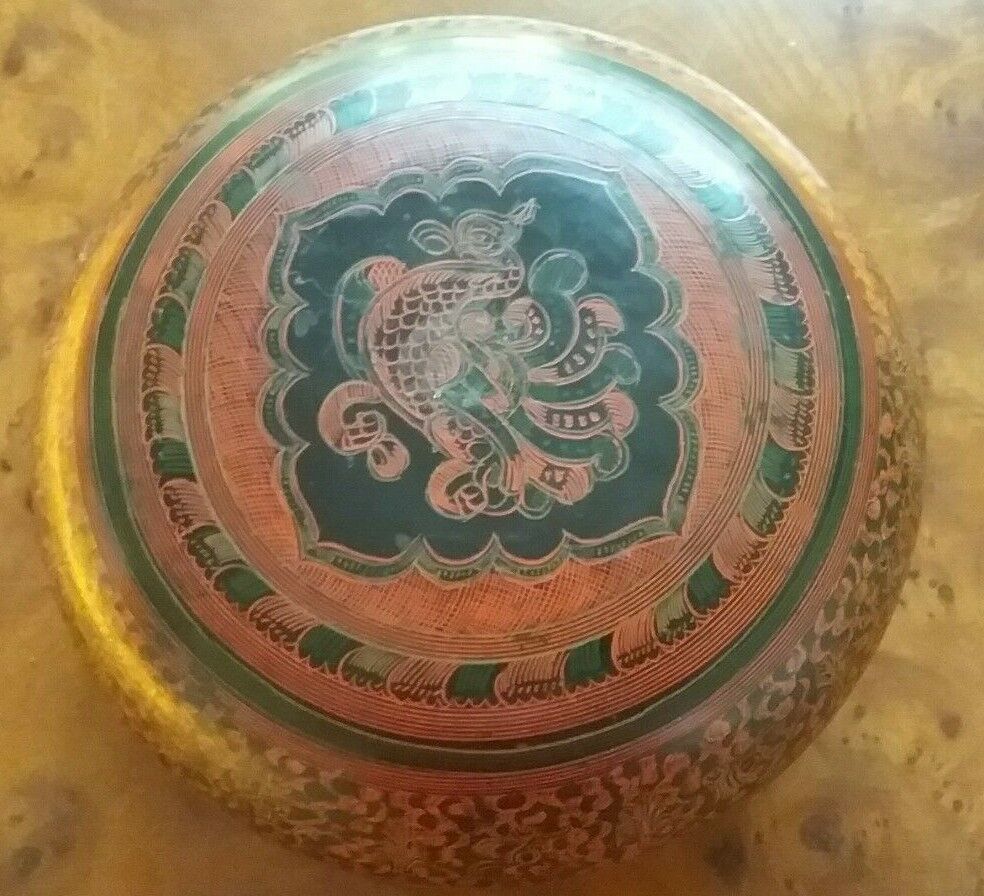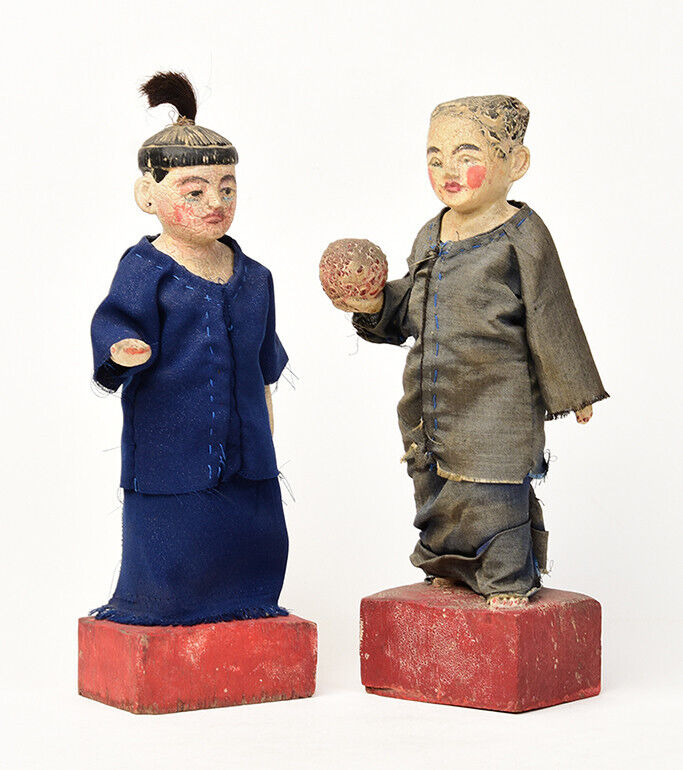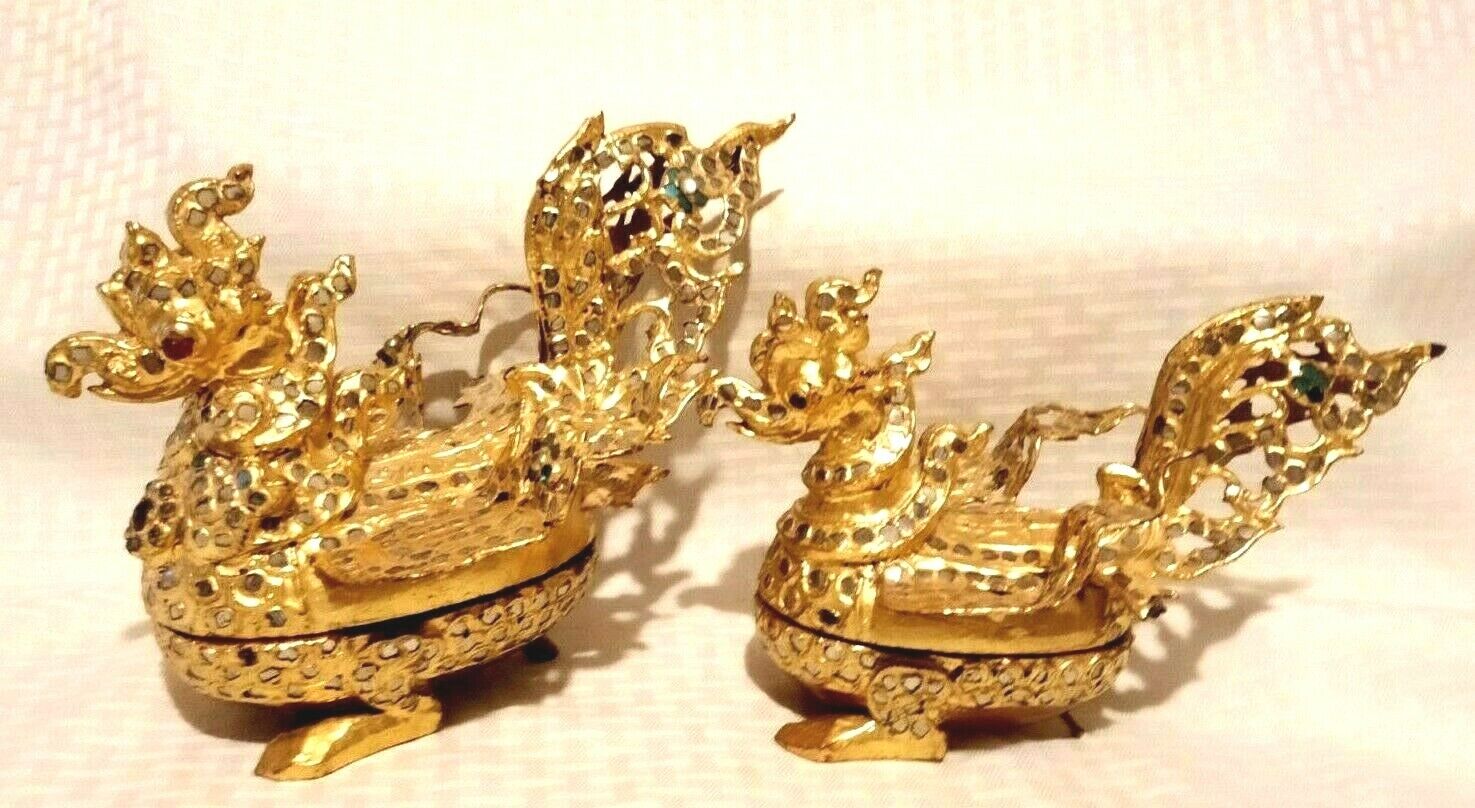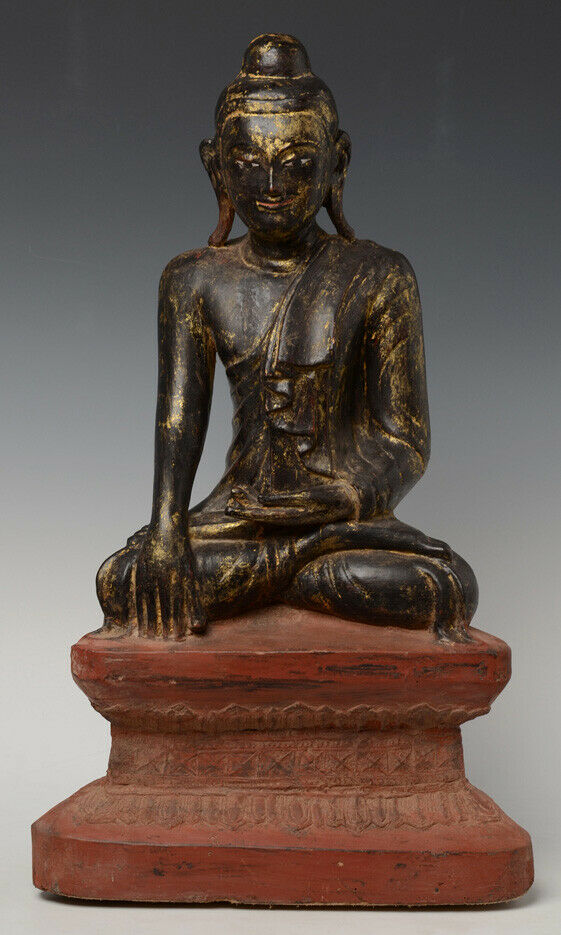-40%
RARE COMPLETE MYANMAR / BURMESE BIBLE-KAMMAVACA-PRICED TO SELL DC
$ 842.16
- Description
- Size Guide
Description
YOU ARE BIDDING ON A BURMESE BIBLE. PLEASE SEE THE DESCRIPTION BELOW.CONTACT ME WITH ANY QUESTIONS.
THANKS FOR LOOKING & GOOD LUCK BIDDING !!!
When we were in Burma, we knew these as Burmese Bibles, since they were gifts given to new Monks entering the Monastery to study and chant. All Burmese males are required to become monks for at least 3-months between the ages of 18 and 21. The books are holy scripts written in Pali, just like the Bible was written in Aramaic and Greek., thus the name. The one you have is special owing to its multiple gold leaf paintings.
The Southern Cross
Asian Arts Collection – South & SE Asia
19
th
/Early 20
th
Century Kamavacca
one PAGE
-
0
19
th
/Early 20
th
Century Kammavacca -
0
&
Up
History & Artistic Techniques of the Kammavaca (Pali Book/Burmese Bible)
Kammavaca are among the most sacred of Burmese religious texts. They consist of nine Khandakas from the Pali Vinaya Pitaka, each of which relates to a specific ceremony associated with the Theravada school of Buddhism. They were commissioned as works of merit to be presented to a Buddhist Monastery when a son entered the Buddhist Order as a novice or became ordained as a monk.
The earliest Kammavaca which date from the
Pagan Period (1004-1287)
were either incised with a stylus or written in ink on plain unadorned palm-leaf. The beginnings of embellishment on Kammavaca appears to date from around the 14th century, with the discovery of a palm-leaf manuscript now with the Rangoon Department of Archaeology, written in black ink on a gilt and red lacquer background.
Around the latter half of the seventeenth century, a square type of writing executed in thick resinous black lacquered called ‘tamarind seed’ became the preferred script for Kammavaca. Folded, heavily lacquered cloth was then the preferred medium for ‘pages’ for Kammavaca - the most highly prized were those made from the robes of kings or highly revered monks.
Also at that time gold leaf (shwei-zawa) illustrations began to make their appearance in the margins and between the four to five lines of writing on a brown to reddish orange background scored with fine hatch strokes. Margin embellishment gradually became more intricate in the following two centuries, and included bands of stylized lotus petals, monks’ fans, diamonds rhombs, beading, and large octagonal and circular rosette, mandala and endless knots, as well as birds and foliage between the lines.
The Mon people of Lower Burma employed silver leaf rather than gold on their Kammavaca, often using the Burmese language rather than the more formal Pali script. Some Kammavaca in the 18
th
century were
gilded with mo-gyo, an alloy of gold and silver.
Kammavaca reached their apogee during the
Konbaung Dynasty (1752-1885)
. 5 to 7 lines of script became the norm and the background decoration of floral sprigs and birds became more intricate. Covers and margin embellishment became more lavish featuring intricate linked geometric patterns, hintha birds, the 28 Buddha’s of previous world cycles and the present Buddha with disciples and praying Devas. During the nineteenth century Kammavaca also came to be made from brass and copper. Production of Kammavaca continued unabated in the Amarapura-Mandalay area during the early part of the Twentieth century.
The more ‘modern’ Kammavaca consist of 16 loose unbound ‘pages’, (the
exact number varies depending on the length of the khandaka being inscribed). Pages differ in size from 45cm to 65cm in length and from 10cm to 15cm in width. They are made from four folded layers of cotton or chintz cloth thickly covered with a few coats of orange and brown lacquer to create a smooth but plaint surface. To prepare the ‘page’ for the text, the pages are first ruled up with a pen or brush to mark out the lines, margins, and appropriate spaces for embellishment. The script is then blocked out. After the gold-leaf is applied, an impression of the text shows through in the ground lacquer color. The words are then painted over with a thick gummy black lacquer.
After the text is written, the intervening lines are embellished in gold-leaf, using a negative technique. Tiny delicate illustrations depicting snippets of foliage, birds, and small animals are set against a fine hatch stroke background. The margins surrounding the text are framed by a band of 2cm-wide gold scrolling in the form of curling tendrils often in the dha-zin-gwei design or in an upturned lotus petal motif. Small circles & parallel saw tooth lines finish the border patterns on all sides. Pages are numbered according to the consonant and vowel sounds of the Burmese alphabet.
The pages of the Kamavacca, or the kamawa-sa are protected by covers (kyan) of brown or orange lacquered teak wood. These are beveled around the edges to give a
slightly raised effect to the surface. Like the pages they enclose, most covers are decorated with panels of lively free-hand gold-leaf (shwei-zawa) drawings from their Burmese fantasy world of the Deva, Hi-tha, Kinnara and To-naya. Covers made of relief- molded lacquer inlaid with glass mosaic jewels were also produced.
The title of the book is sometimes written in gilt on the inside cover.
The first and the last pages of a Kammavaca are not usually inscribed, but are illustrated with a series of panels echoing the mythical creatures on the cover.
The text begins overleaf. The first and last pages of writing are inset with decorated panels on either side of the opening stanza. This combination creates the appearance of a medieval manuscript.
Kammavaca are read horizontally from left to right. Each page is turned away from the reader as it is finished and the next one begun. Like all Burmese books, they are handled with great care. In former times Kammavaca were placed on a small stand when read. Women are expressly forbidden from placing pages on their laps. After reading, the pages are stacked and secured with bamboo pin passed through the two perforations on each page. The book was carefully wrapped in a dust jacket (kabalwe) of silk, satin or velvet, sometimes reinforced with strips of bamboo. Finally it was bound by a long ribbon (sa-si-gyo) woven on a card loom and placed in a gilded box for safe-keeping. The title might be inscribed on a sliver of bamboo inserted within the bindings.
Kamavacca
hung as a wall hanging in Southern Cross LLC
(Note: All sixteen pages are strung together, but individual pages
may be extracted/inserted depending on Ceiling Height.)











